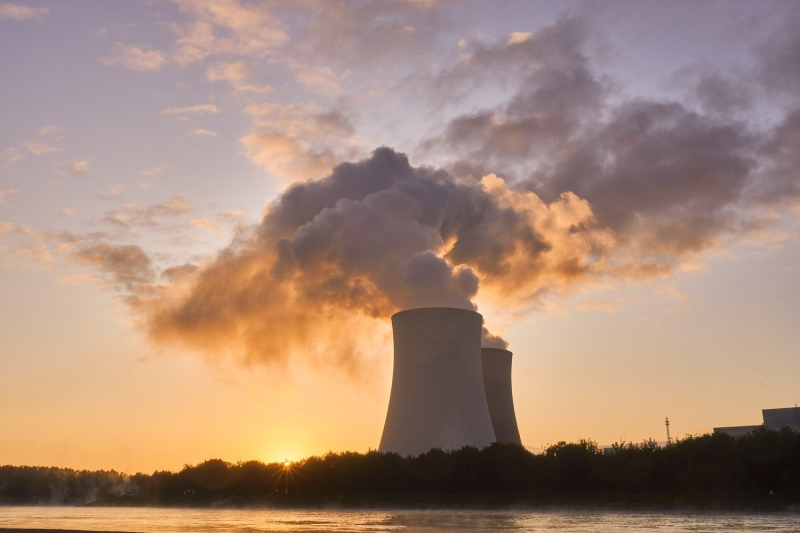
© distelAPPArath/Pixabay
Currently, Nuclear energy represents more than 10% of global electricity production. France is a pioneer with nearly 70% of its electricity coming from this source of ;#8217;energy, the State having played a central role in the development of this technology. In particular thanks to significant investments in research and by creating public companies such as EDF in 1946.
In reality, when we talk aboutnuclear energy, it is a generic term, behind which are hidden two distinct processes. Fission, mastered and exploited industrially by nuclear power plants, and fusion, still confined to the field of research (or in the bedroom of some handymen, but that's an exception).
The delicate art of fission: a proven technology
Nuclear fission is based on a principle: the splitting of heavy uranium atoms under the impact of neutrons (a small particle). When a neutron hits a uranium atom, it “splits” it into two smaller pieces. When it breaks, the latter releases a phenomenal amount of energy and sends other neutrons around it. These neutrons then hit other atoms, which in turn split and release even more energy. This chain reaction is the basis for producing the enormous amount of energy used in nuclear power plants.
The fission of a nucleus of uranium 235 (the type of uranium most commonly used in power plants) releases more than 6 million times the energy of a combustion reaction of the purest coal. All this power is all well and good, but what do we do with it?? In power plants, this power is harnessed through a complex system where thermal energy is converted into electricity via heat exchangers that transform water into steam.
This steam is then directed towards turbines, large wheels that turn under the force of the steam; the rotation of these turbines then drives generators that produce electricity. It is this steam that we see coming out of the large cooling towers that we often see above power plants. However, this steam is not radioactive; it is simply water vapor that has served to cool the entire system, much like a large radiator.
Fusion: The Energy of Stars
Fusion is the exact opposite of fission: instead of splitting heavy atoms, it fuses light atoms (atoms with a small number of nucleons, protons and neutrons), mimicking the process that powers stars like our Sun. When these small atoms get close enough together, they “merge.” into a single heavier atom, and this fusion releases a colossal amount of energy, in the form of heat and light.
200% Deposit Bonus up to €3,000 180% First Deposit Bonus up to $20,000This reaction, mainly studied with deuterium and tritium (hydrogen isotopes), promises spectacular energy yields, nearly four times higher than those of the fission of uranium 235. This is why it is often described as the Holy Grail of energy sources and why projects such as JET (United Kingdom) or ITER (France) exist. To demonstrate that controlled fusion is exploitable.
Fusion is a very complex phenomenon to replicate on Earth; it requires extreme conditions, such as those that prevail in the heart of the Sun: temperatures of several million degrees so that the light atoms can get close enough to fuse. At these temperatures, matter becomes a plasma (a type of superheated gas), which is very difficult to contain without it touching the walls of a reactor, because any direct contact would immediately cause the temperature to drop and stop the reaction.
Therefore, to overcome this problem, researchers must therefore create …e powerful magnetic fields to keep this plasma in suspension ; which requires very advanced technologies, still under development. This year, a record was set on a reactor at the ITER site in Bouches-du-Rhône. In May, plasma was confined for 364 seconds at a constant temperature of 50 million degrees Celsius, a heat higher than that at the center of the Sun.
Subscribe to Presse-citron
This record, as impressive as it is, does not mean that we can turn on a switch and produce electricity through fusion tomorrow, we are still far from that. Research in this field is progressing very steadily, and the scientific community estimates that in 2050, fusion will be able to be exploited to produce virtually infinite quantities of energy. The latter has considerable advantages: abundant fuel (deuterium is present in immense quantities in the oceans), less production of radioactive waste and, above all, the impossibility of possible military use.
- Nuclear fission, which splits heavy atoms such as uranium, is mastered and used in power plants to produce electricity.
- Fusion, still in development, promises abundant energy with yields four times higher than those allowed by fission.
- Projects such as ITER aim to make fusion exploitable by 2050.
📍 To not miss any Presse-citron news, follow us on Google News and WhatsApp.
[ ]

